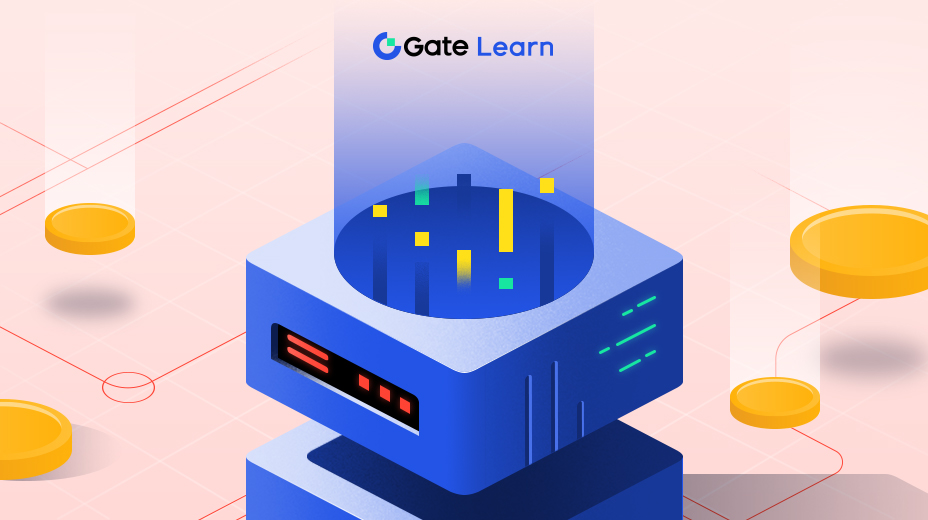Tối ưu hóa khai thác tiền điện tử: Lựa chọn phần mềm lý tưởng
Trong bài học này, chúng ta sẽ khám phá các yếu tố chính cần xem xét khi lựa chọn và định cấu hình phần cứng lý tưởng để khai thác tiền điện tử. Với bối cảnh không ngừng phát triển của tiền điện tử và thuật toán khai thác, điều quan trọng là phải đưa ra quyết định sáng suốt để tối ưu hóa các nỗ lực khai thác của bạn. Chúng ta sẽ thảo luận cách đánh giá và chọn GPU, CPU, FPGA hoặc ASIC tốt nhất cho các mục tiêu khai thác cụ thể của bạn, cùng với các mẹo để đánh giá tiềm năng khai thác của thiết bị. Bằng cách hiểu những khía cạnh quan trọng này, bạn sẽ được trang bị đầy đủ để tối đa hóa phần thưởng khai thác của mình và tận dụng tối đa khoản đầu tư vào phần cứng khai thác.
Những cân nhắc chính để chọn phần cứng khai thác
Khi lựa chọn thiết bị khai thác, các yếu tố quan trọng khác nhau cần được xem xét, bao gồm:
Tỷ lệ băm: Số liệu quan trọng này xác định tốc độ mà thiết bị khai thác có thể thực hiện các phép tính phức tạp cần thiết để khai thác tiền điện tử. Tỷ lệ băm cao hơn cho phép các thiết bị giải quyết các vấn đề khó khăn hơn, do đó làm tăng phần thưởng.
Tiêu thụ điện năng: Thiết bị khai thác đòi hỏi năng lượng đáng kể và chi phí năng lượng cao có thể ảnh hưởng nghiêm trọng đến lợi nhuận khai thác. Vì vậy, điều cần thiết là lựa chọn thiết bị tiết kiệm năng lượng không làm tăng hóa đơn tiền điện.
Chi phí ban đầu: Giá thiết bị khai thác có thể rất khác nhau, tùy thuộc vào loại phần cứng và loại tiền điện tử cụ thể được nhắm mục tiêu. Tạo sự cân bằng giữa chi phí ban đầu của phần cứng, phần thưởng tiềm năng và chi phí năng lượng là rất quan trọng.
Tiếng ồn và nhiệt: Thiết bị khai thác có xu hướng tạo ra tiếng ồn và nhiệt đáng kể, gây khó khăn cho việc sử dụng trong môi trường dân cư hoặc văn phòng. Chọn phần cứng có cơ chế làm mát hiệu quả và tính năng hoạt động yên tĩnh.
Độ bền và độ tin cậy: Vì phần cứng khai thác hoạt động 24/7 nên bất kỳ thời gian ngừng hoạt động nào cũng có thể dẫn đến tổn thất tài chính. Chọn phần cứng bền, đáng tin cậy với tỷ lệ lỗi thấp là điều cần thiết.
Khả năng mở rộng và khả năng nâng cấp: Khi các yêu cầu và thuật toán khai thác thay đổi theo thời gian, điều quan trọng là phải xem xét phần cứng có thể dễ dàng mở rộng hoặc nâng cấp để duy trì hiệu quả khai thác.
Cách chọn GPU, CPU, FPGA hoặc ASIC tốt nhất để khai thác

Một số yếu tố, chẳng hạn như loại tiền điện tử bạn dự định khai thác, ngân sách và mục tiêu khai thác của bạn, sẽ xác định xem GPU, CPU, FPGA hay ASIC là tốt nhất để khai thác. Để giúp bạn chọn phần cứng khai thác lý tưởng, hãy xem xét các mẹo sau:
Xác định thuật toán khai thác: Các loại tiền điện tử khác nhau sử dụng các thuật toán khai thác khác nhau, yêu cầu các cấu hình phần cứng khác nhau. Ví dụ: Ethereum Classic ưu tiên GPU, trong khi Bitcoin và Litecoin được khai thác tốt nhất bằng ASIC.
Ngân sách: ASIC thường là thiết bị khai thác đắt tiền nhất, tiếp theo là FPGA, GPU và CPU. Tùy chọn tốt nhất trong ngân sách của bạn sẽ phụ thuộc vào số tiền bạn có thể đầu tư vào phần cứng.
Tìm kiếm tỷ lệ băm cao: Tỷ lệ băm cao hơn thường dẫn đến các khoản thanh toán lớn hơn, vì vậy hãy tìm thiết bị có tỷ lệ băm cao được tối ưu hóa cho thuật toán khai thác mà bạn định sử dụng.
Xem xét mức tiêu thụ điện năng: Vì thiết bị khai thác có thể tiêu thụ rất nhiều điện năng nên điều cần thiết là chọn phần cứng tiết kiệm năng lượng và không làm tăng chi phí điện của bạn.
Điều tra danh tiếng của nhà sản xuất và chất lượng dịch vụ khách hàng của họ trước khi chọn bất kỳ thiết bị nào.
Kiểm tra tính khả dụng: Một số thiết bị khai thác có thể khó tìm do nhu cầu cao. Đảm bảo bạn kiểm tra tính khả dụng trước khi mua hàng.
Xem xét giá trị bán lại: Nếu bạn định bán thiết bị của mình trong tương lai, hãy chọn phần cứng khai thác có giá trị bán lại cao.
Đánh giá tiềm năng khai thác của một thiết bị

Khi đánh giá tiềm năng khai thác của thiết bị, một số yếu tố quan trọng cần được xem xét:
Độ khó khai thác: Vì độ khó khai thác có thể thay đổi theo thời gian, hãy chọn phần cứng có khả năng xử lý các biến động.
Giá tiền điện tử: Giá của tiền điện tử mục tiêu có thể ảnh hưởng đến tiềm năng khai thác của thiết bị. Chọn phần cứng có thể khai thác tiền điện tử có giá trị cao một cách hiệu quả.
Khả năng tương thích với phần mềm khai thác: Khả năng tương thích giữa phần cứng và phần mềm khai thác là điều cần thiết. Đảm bảo phần cứng bạn chọn hoạt động trơn tru với phần mềm khai thác ưa thích của bạn.
Hỗ trợ cho các nhóm khai thác: Một số phần cứng có thể có hỗ trợ tích hợp cho các nhóm khai thác, điều này có thể giúp tăng lợi nhuận khai thác của bạn.
Lợi tức đầu tư (ROI): Tính toán ROI dự kiến, có tính đến các yếu tố như chi phí ban đầu, tỷ lệ băm, mức tiêu thụ điện năng và độ khó khai thác để xác định xem phần cứng có phải là khoản đầu tư tốt hay không.





